Bulimia Nervosa: Introduction, Types, Causes, Symptoms, and Treatment
VerifiedAdded on 2023/01/13
|10
|723
|67
Report
AI Summary
This report provides a detailed overview of bulimia nervosa, a life-threatening psychological eating disorder characterized by binge eating and purging behaviors. It begins with an introduction to bulimia nervosa, defining the disorder and its key characteristics. The report then explores the two main types of bulimia nervosa: purging and non-purging types, explaining the differences in compensatory behaviors. It further delves into the various causes of bulimia, including environmental, genetic, cultural, and psychological influences. The report also outlines the signs and symptoms associated with bulimia nervosa, such as eating in privacy, weight fluctuations, and electrolyte imbalances, and details the effects of bulimia on the body, encompassing issues like tooth decay, irregular heartbeats, and complications in childbirth. Finally, the report discusses the treatment approaches for bulimia nervosa, which includes terminating the binge-purge cycle, addressing negative thoughts, resolving emotional issues, and the use of medications like antidepressants. The report is based on the information from the provided references.
1 out of 10

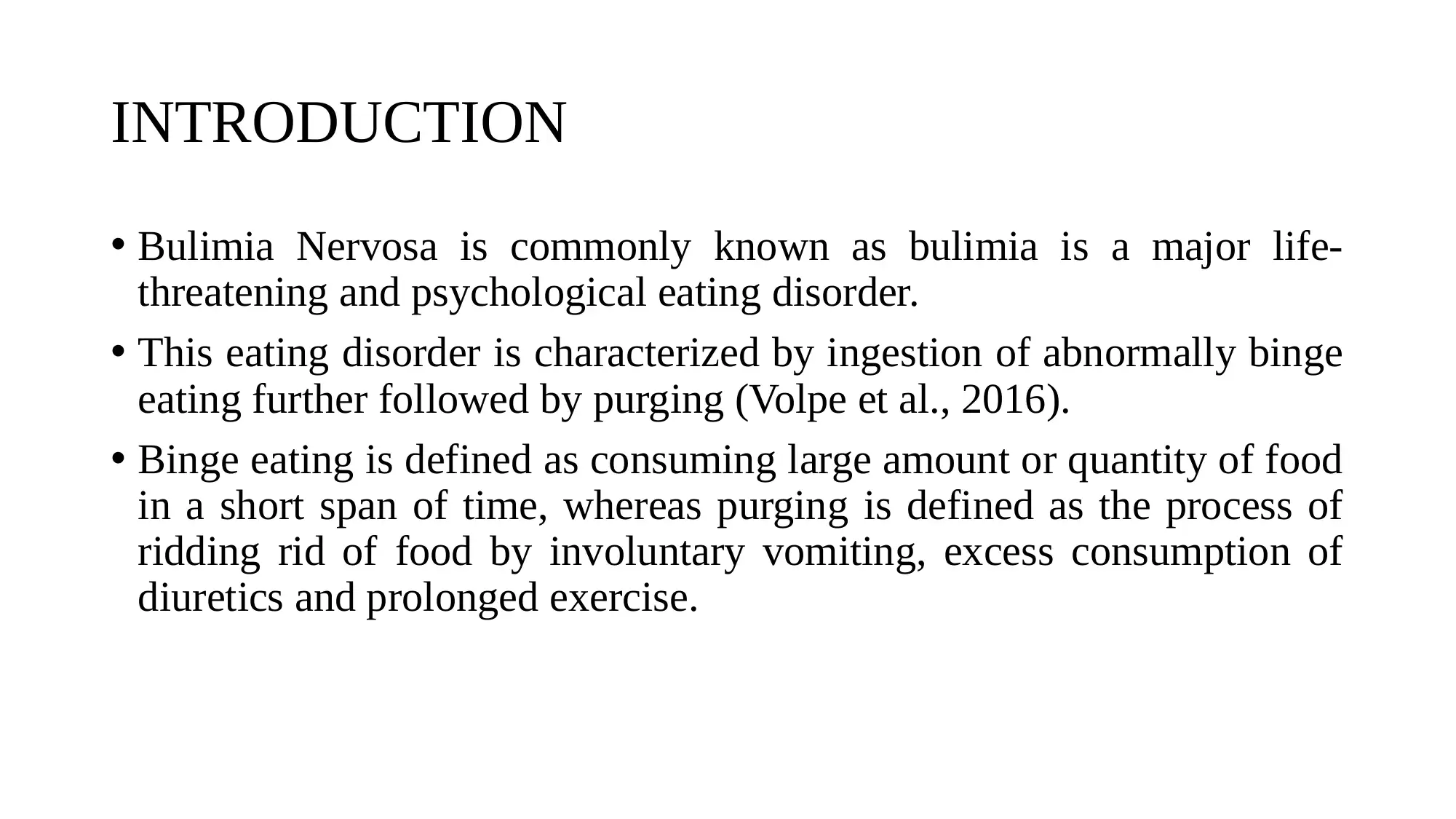
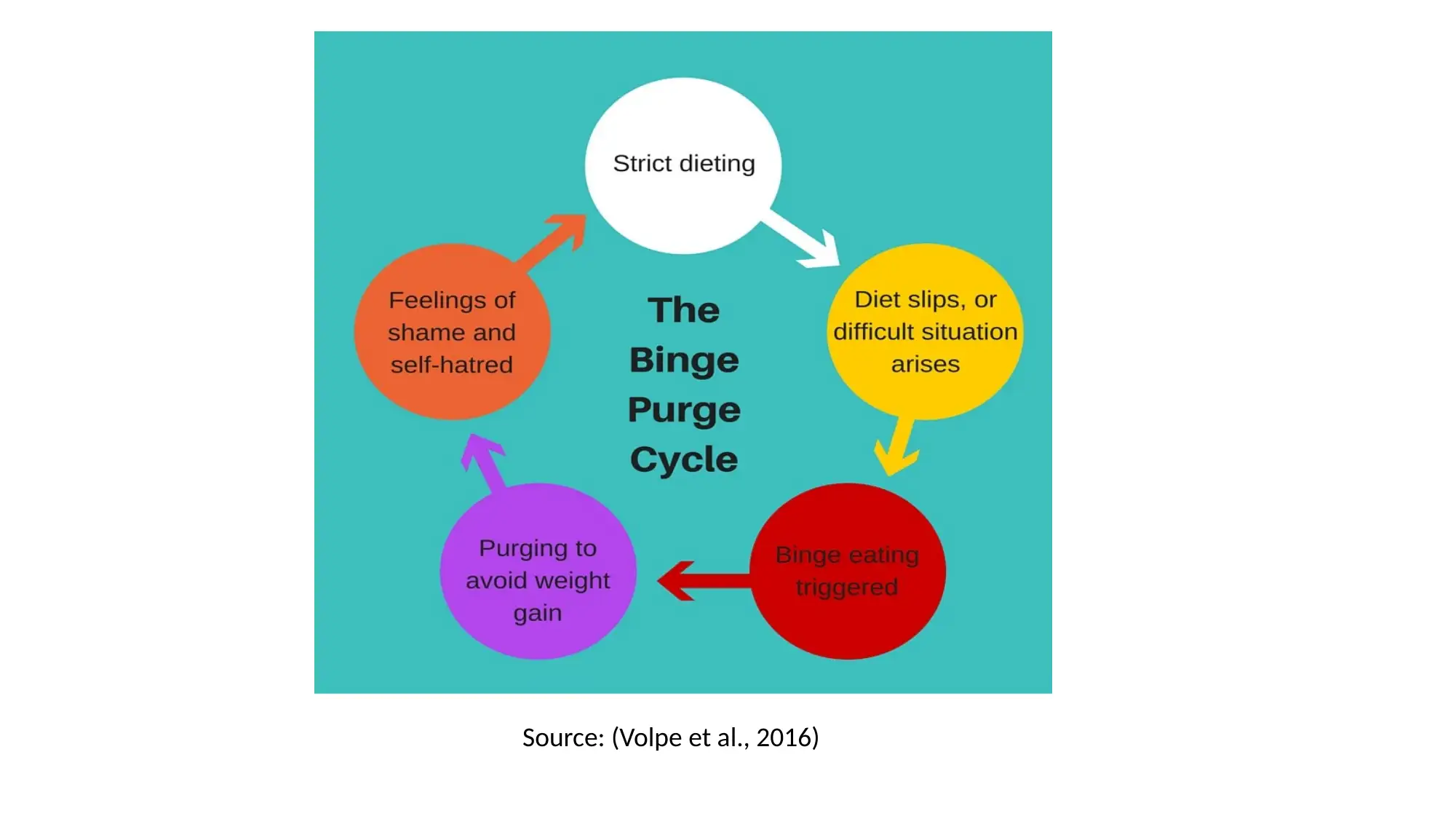

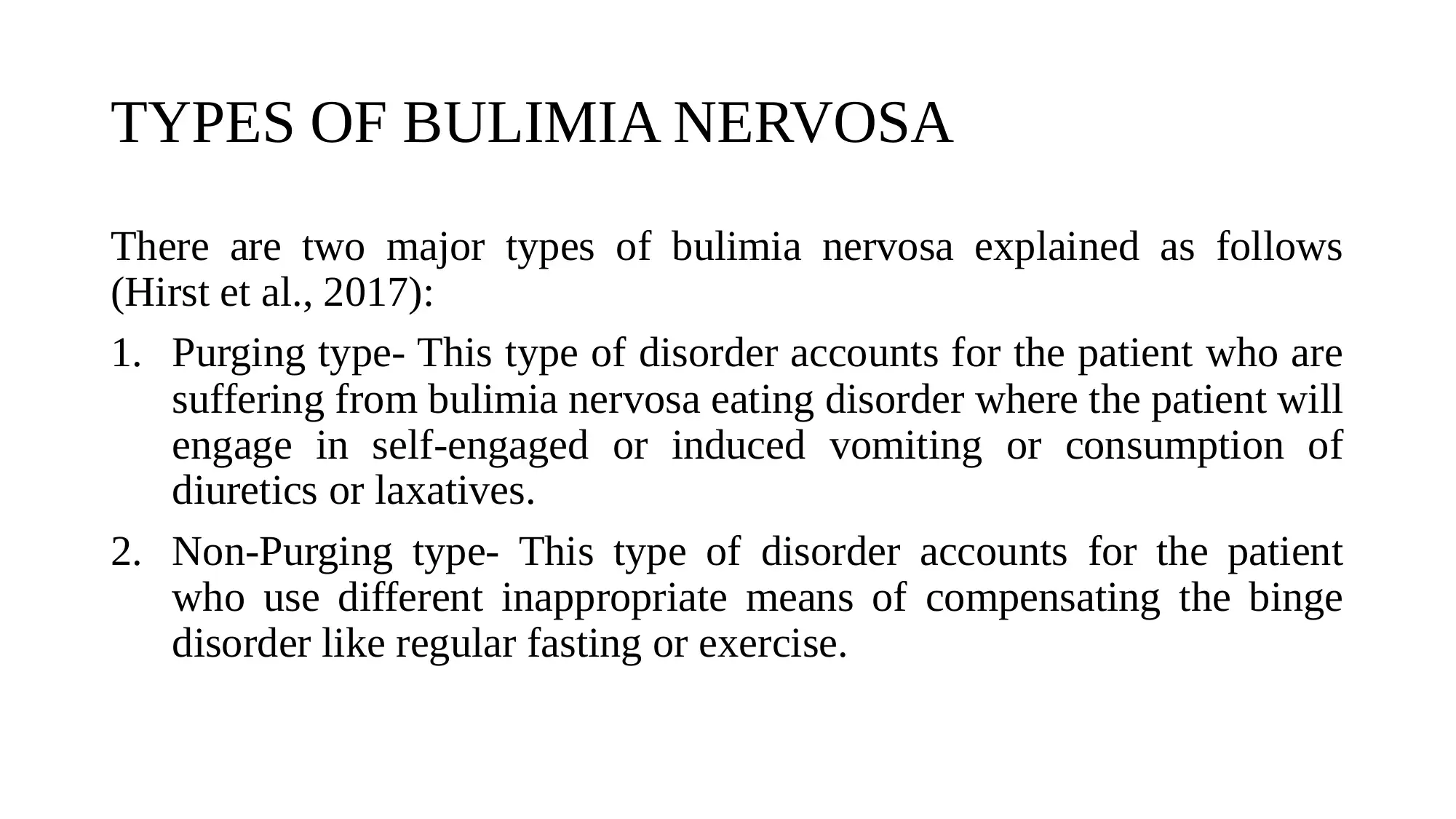
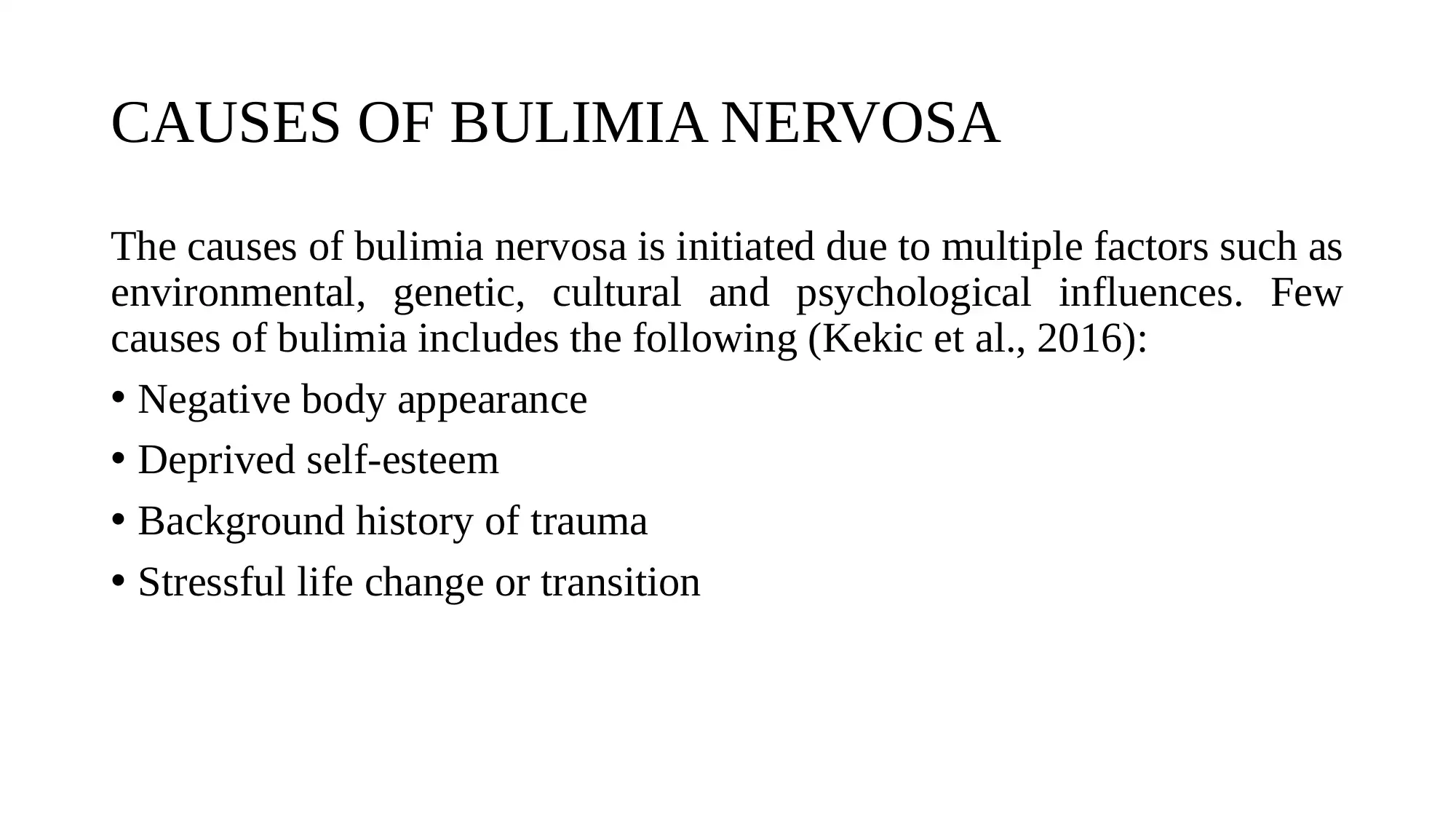
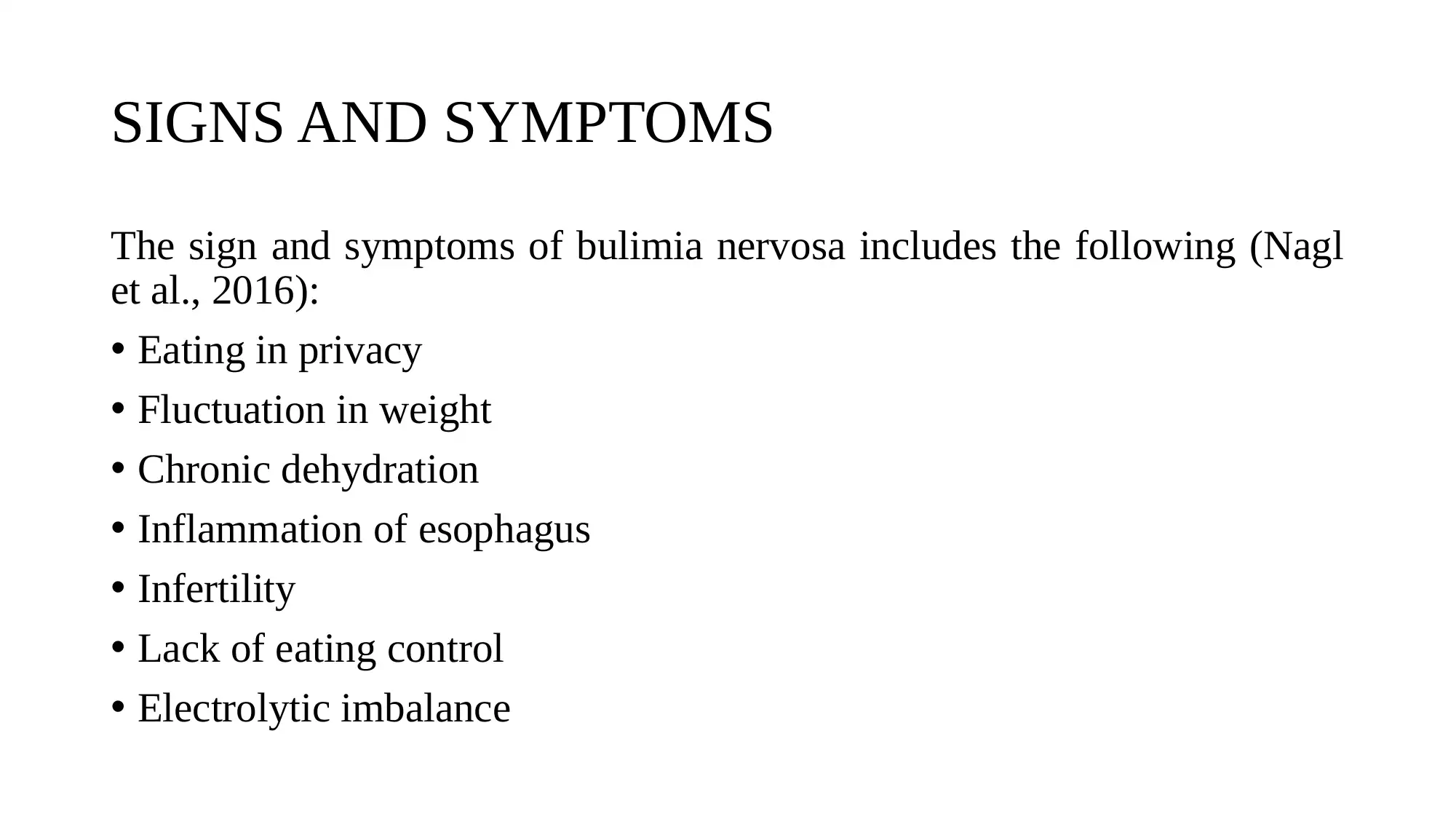
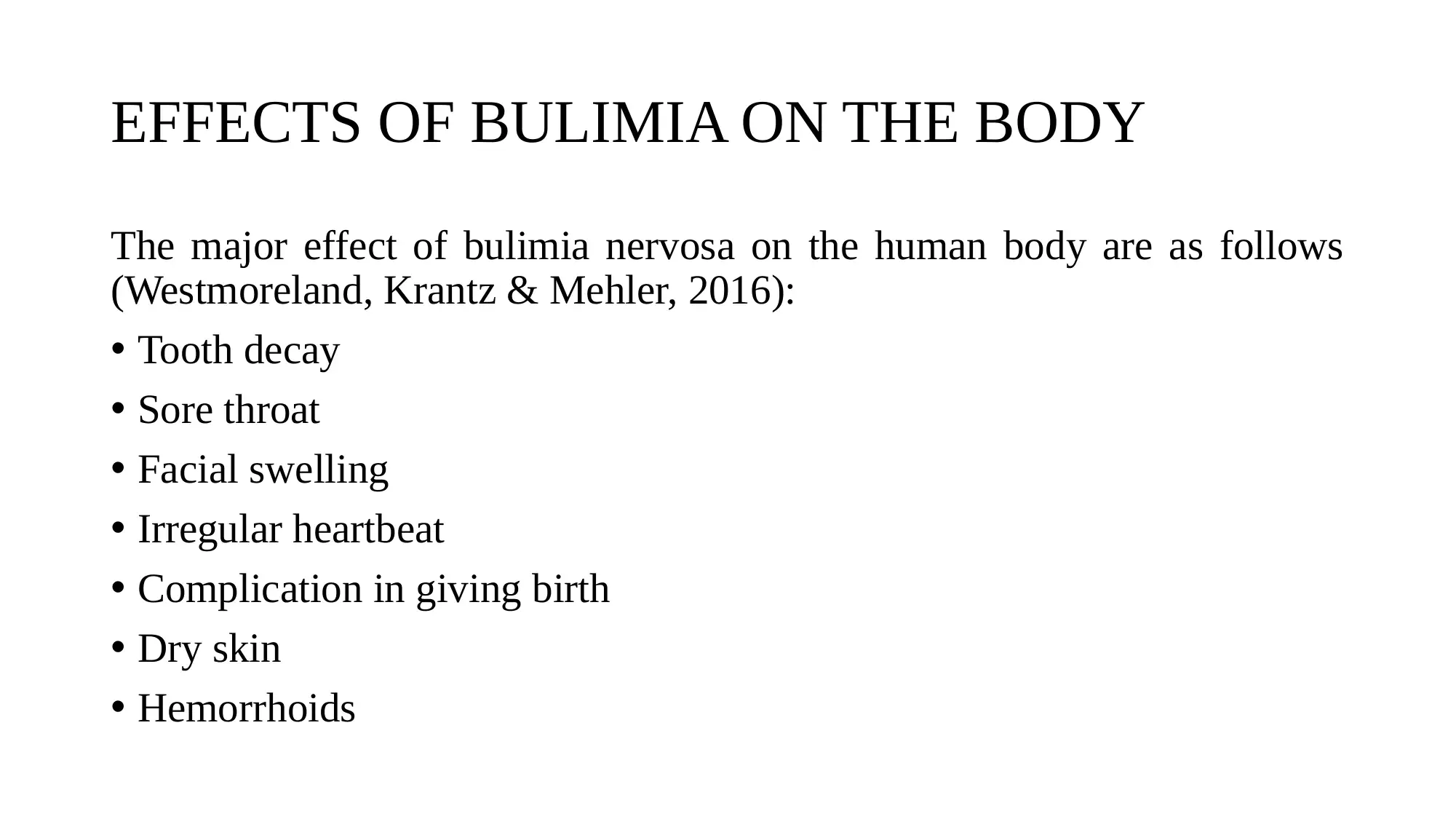
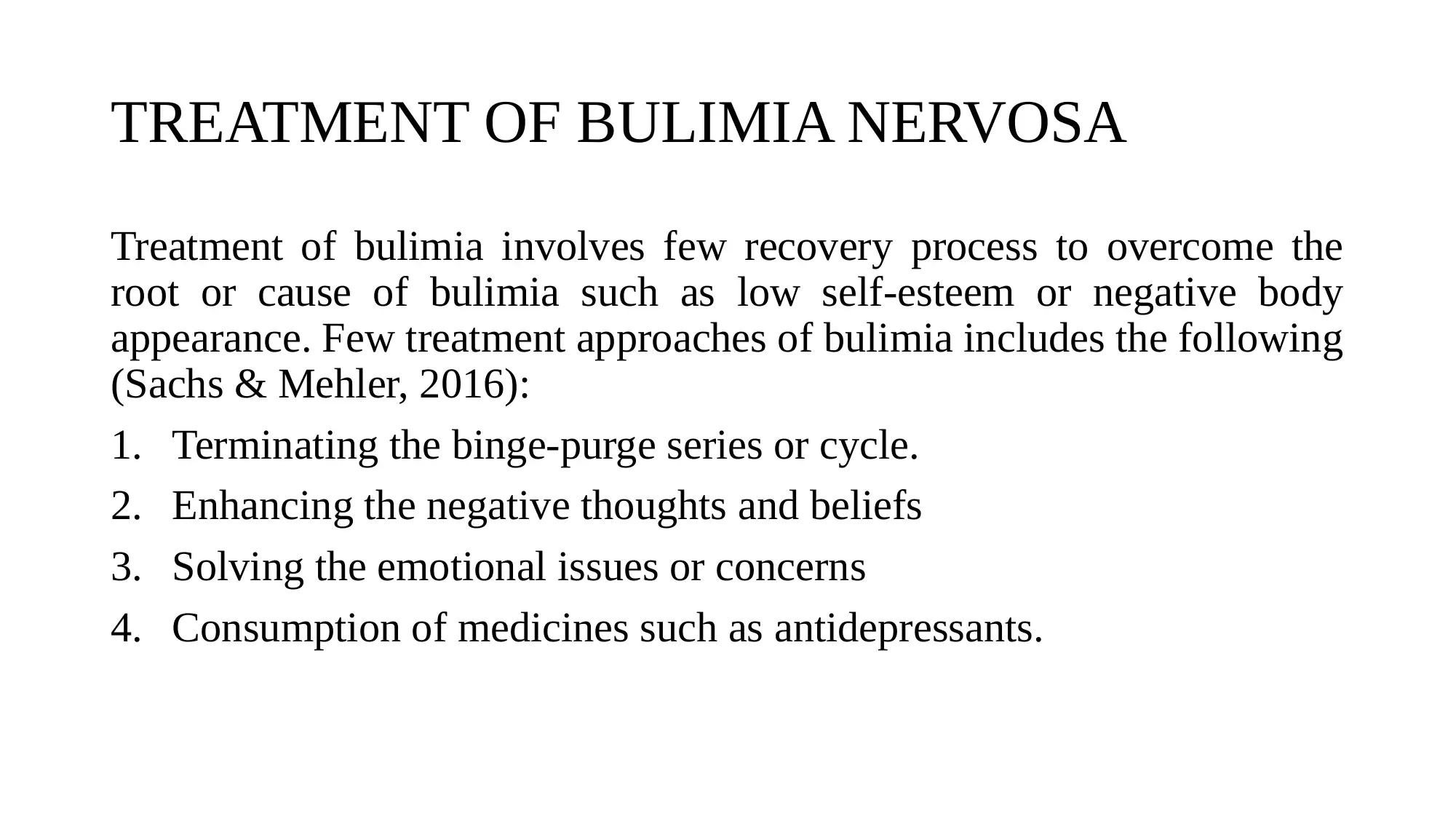
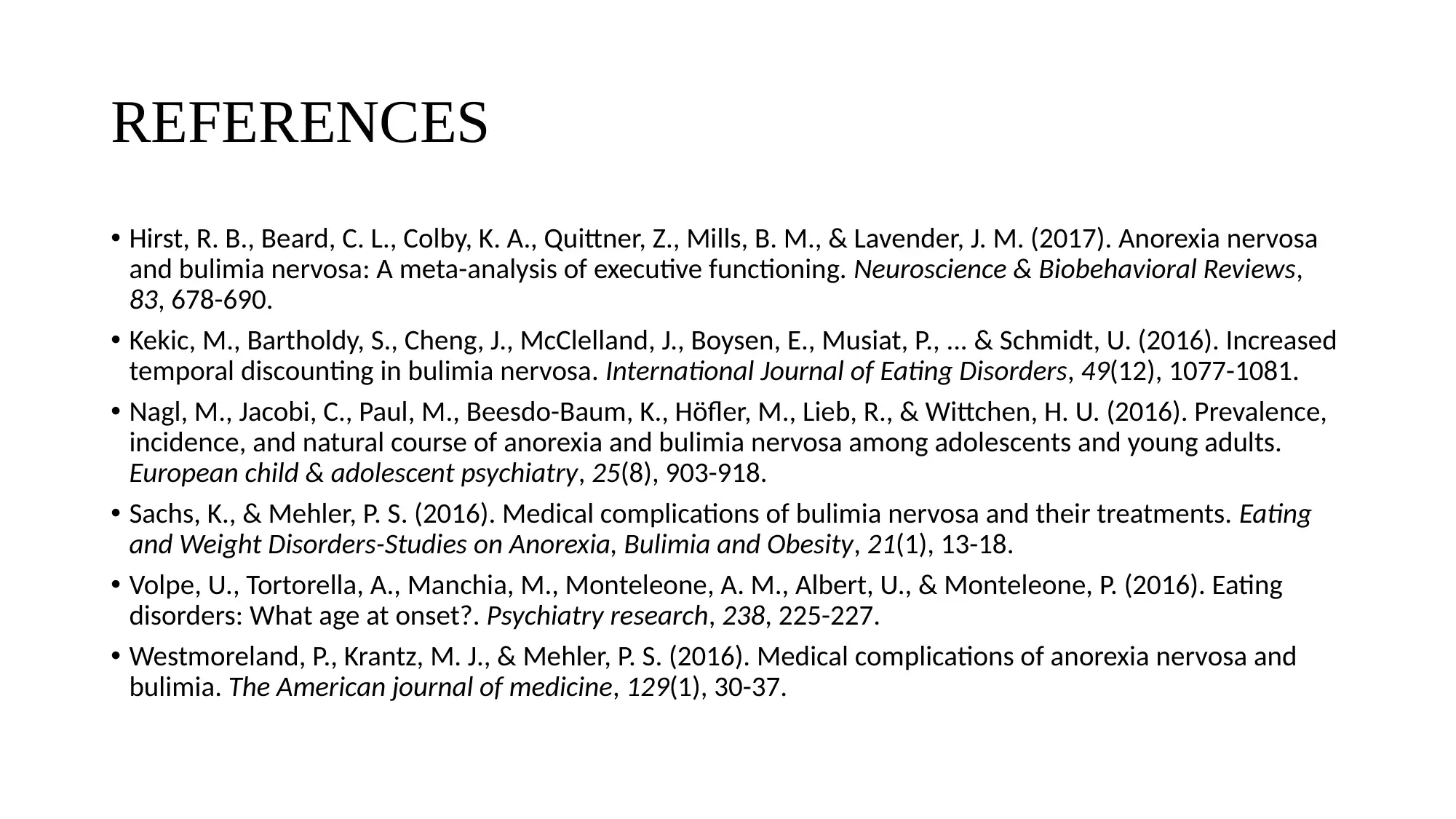







![[object Object]](/_next/static/media/star-bottom.7253800d.svg)